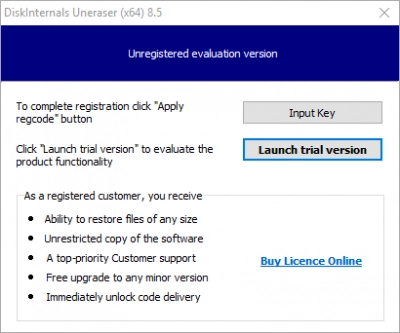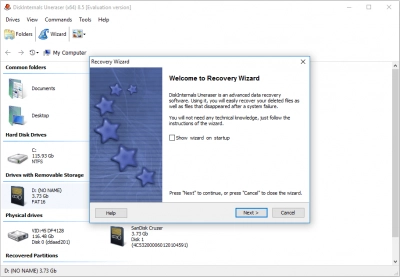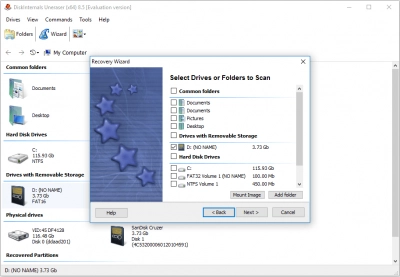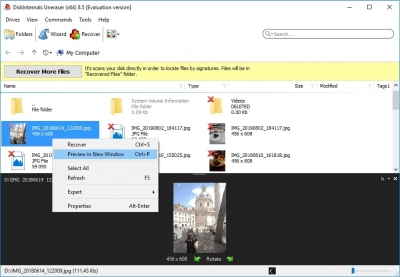How to Recover Files from Avast's Virus Chest?
Many people will advise you to use an antivirus software on your Windows computer system, and one of the most recommended antivirus applications out there is Avast. The Avast antivirus app comes with a ton of features to block threats and prevent your computer system from getting attacked by phishers and hackers.
However, some Avast antivirus features may automatically mark some of your important files as potential threats and move them to a “Virus Chest.” When these files are moved to the virus chest, you won’t be able to access them again unless you remove them from there. So, how do you recover files from Avast’s virus chest?
What is the Avast Virus Chest, and Why Does It Keep Deleting My Files?
Avast is a top-tier cybersecurity application designed for users of Windows operating systems. Its primary role is to safeguard your computer from various kinds of malware and viruses, while also preventing new threats from infiltrating your system.
The software conducts regular scans of your entire computer and scrutinizes newly saved files for possible risks. Using its built-in algorithm, Avast identifies files that could potentially be hazardous and transfers them to a secure area known as the "Virus Chest."
This Virus Chest acts as a quarantine zone where potentially harmful files are isolated to prevent any further damage. Once a file is placed in this zone, it's effectively contained, preventing any malware or virus from spreading.
However, it's worth noting that Avast's detection algorithm isn't infallible. Sometimes, it may erroneously identify benign files as threats and move them to the Virus Chest, making them inaccessible to you.
Fortunately, there's a solution: you have the option to retrieve important files from the Virus Chest. Additionally, you can tweak Avast's settings to minimize the chances of it mistakenly flagging your essential files as threats.
Can You Recover Files Deleted by Avast Using the Command Prompt?
The simple and straightforward answer is NO. You cannot recover or retrieve a file that has been moved into the Avast virus chest using the Windows Command Prompt utility. Yes, there are many advanced file recovery actions you can run using the command prompt as an admin on a computer, but none of those commands can remove or restore a file that is in the Avast virus chest. To get out your important files from the Avast virus chest, there are specific methods to follow, and they are explained in this article.
How Do I Access Avast Virus Chest?
Avast Virus Chest is available on all editions of the antivirus software; it is accessible from the “Protection” tab. There are other features you can access from this “Protection” tab – Avast includes these features to offer high-end security to protect your system from any form of malware or virus attack.
How to Recover Files Deleted by Avast Antivirus
These methods discussed below are the only ways to get out files from the Avast virus chest – back to your preferred storage directly on your PC’s primary hard drive.
Method 0: Start with checking the Avast Quarantine
If you suspect that Avast has deleted a file, the first thing you should do is check the Avast Quarantine. The Quarantine is a secure area where Avast stores suspicious files that it has detected on your computer.
To access the Quarantine in Avast, follow these steps:
- 1. Open Avast and click on "Protection" in the left-hand menu.
- 2. Click on "Virus Chest" in the sub-menu.
- 3. In the Virus Chest, you should see a list of all the files that Avast has quarantined. Look for the file you suspect was deleted and click on it.
- 4. You can then choose to either restore the file or delete it permanently.
If you find the deleted file in the Quarantine, you can easily restore it to its original location on your computer. If the file is not in the Quarantine, you may need to use a file recovery tool to retrieve it.
Method 1: Open the Virus Chest and Restore the File(s)
The Virus Chest feature is available on all editions of the Avast Antivirus application. You can always access it from the “Protection” tab. Hereunder are the steps to access the virus chest feature and restore your important files and documents.
- Open the Avast Antivirus program and click on the “Protection” tab
- Look out for the “Virus Chest” tab and double-click on it to open the content
- Find your important files and select all of them
- Click on the three dots at the bottom of the window and choose the “Restore” option
- That’s all. The files will be restored to their previous folders – you can go to those folders to re-access them.
Note: If you want Avast to stop picking those files as malicious threats, add them to the exception list by using the “Restore and add exception” context menu option. This way. Avast will skip those files (or the specific directory) when scanning for potential malware files.
How to Recover When Avast Virus Chest Restore not Working?
Practically, there’s no way the Avast Virus Chest would stop working. If it is not opening for you to access your files, then it’s probably because you haven’t updated your Avast antivirus software app. If your antivirus app is up to date, you should be able to open and access the files in the virus chest.
Notwithstanding, if the file you’re looking for is not in the virus chest, and you can’t find it in the folder where you saved it prior, then you should use a reliable data recovery software to find the file. There are quite many good data recovery software programs that can scan deeper into your storage drive and phish out all your missing files.
Method 2: Use a Third-party Data Recovery Software to Recover Avast Deleted Files
DiskInternals Uneraser is a professional data recovery software program that has helped IT experts, advanced PC users, and, equally, newbies recover their lost files from a wide variety of storage media and disks, including SD cards, flash drives, and network drives. The Uneraser software has been regularly updated for more than 15 years to support newer data recovery algorithms and file (system) formats.
Using DiskInternals Uneraser, you can recover files deleted due to several scenarios, including malware attack on your computer, OS crash, hard drive crash, or sudden power failure. The software runs on old and newer Windows OS versions, so you can launch it on virtually any computer system running Windows OS. More so, the interface is super-easy to navigate with an integrated recovery wizard to make file recovery as simple as ABC.
In rare cases where DiskInternals Uneraser is unable to get back your missing files, DiskInternals Partition Recovery comes in handy. Partition Recovery is a more advanced data recovery solution with support for 1,000+ file formats and 15+ file system formats. It can recover lost files from any storage media and drive, as well as run on all Windows OS computers, including systems running Windows Server OS.
Both DiskInternals Uneraser and Partition Recovery are free to download, and you can preview the recovered files for free. Use these apps when you can’t find your missing files in the Avast virus chest.
Restore Files with DiskInternals Uneraser
Getting back lost files using DiskInternals Uneraser is one of the simplest things to do on a Windows PC – yes, it is that easy, thanks to the built-in recovery wizard interface; you only have to follow the prompts and instructions.
Step One: Install Uneraser

Download and install DiskInternals Uneraser on your computer; launch the software and select the drive where the image file is/was stored for scanning.
Step Two: Scan the Drive

Select the file type you want to recover and choose between Fast and Full Recovery modes since you’re trying to recover a file you’re not sure when it got lost. If you choose Full Recovery mode, the chances of getting back your lost file(s) is highly guaranteed; however, this recovery mode takes more time to complete.

Step Three: Preview the Recovered Files

When the scan is completed, the recovered files will appear with a red asterisk; you can preview the files. Simply click on the recovered file and click on “Preview.” The file will be shown in a pop-up window.

Method 3: Try to restore the file through Command Prompt
Restoring a file through Command Prompt can be a helpful way to recover deleted files in some cases, including Avast file deletions. Here are the steps to try:
- 1. Open Command Prompt: Go to the Start menu, type “cmd” in the search box, and select “Command Prompt” from the results.
- 2. Type the command: Enter the command “CD /d %userprofile%\appdata\local\avastsoftware\avast\” into Command Prompt and press Enter.
- 3. Restore the file: Once you’re in the avast folder, you can restore the deleted file by typing the command “avastclear.exe /restore FILEPATH” and pressing Enter. Replace “FILEPATH” with the path to the file you want to restore.
- 4. Check if the file has been restored: Go to the original location of the file to see if it has been restored.
If this method doesn't work, you may need to try other file recovery tools or contact Avast customer support for assistance.
How to Stop Avast Antivirus from Deleting My File?
Of course, you can stop Avast from detecting your important files as a virus, thus, stopping the antivirus app from constantly deleting your files and moving them into its virus chest. To do this, kindly follow the steps below:
- Launch the Avast Antivirus app on your computer and go to the Settings page from the Menu options.
- In the setting page, select General and go to Exceptions.
- Now, from the exceptions window, you can exclude the files you don’t want Avast to always see as malicious threats.
Tips and Tricks for Preventing Avast File Deletion
Avast is a popular antivirus software that provides protection against viruses, malware, and other security threats. However, sometimes Avast may flag legitimate files as threats and delete them, causing inconvenience and frustration to users. Here are some tips and tricks to prevent Avast from deleting your files:
- 1. Add the file to the Avast exclusions list: If you know that the file is safe, you can add it to the Avast exclusions list. To do this, open the Avast interface, go to Settings, and then click on General. Under the Exclusions tab, click on Add and select the file that you want to exclude.
- 2. Disable the File Shield: The File Shield is a feature of Avast that scans files in real-time for threats. However, sometimes it may flag legitimate files as threats and delete them. You can disable the File Shield temporarily or permanently to prevent this from happening. To do this, open the Avast interface, go to Settings, and then click on Components. Find the File Shield component and click on the switch to turn it off.
- 3. Restore the deleted file from the Avast Virus Chest: If Avast has already deleted a file, you can check the Avast Virus Chest to see if the file is still there. If it is, you can restore it. To do this, open the Avast interface, go to Protection, and then click on Virus Chest. Find the file that you want to restore, right-click on it, and select Restore.
- 4. Use a different antivirus software: If you are still having issues with Avast deleting files, you may want to consider using a different antivirus software that is less aggressive in its threat detection and removal.
By following these tips and tricks, you can prevent Avast from deleting your files and ensure that your important files are safe and secure.
FAQ
Where does Avast store infected files?
Avast Virus Chest is located in the Menu of Avast Antivirus application. To access the Virus Chest, launch the application and go to the Menu. From there, select Virus Chest.
Does Avast automatically delete infected files?
By default, Avast moves infected files to the Virus Chest directory. It only deletes infected files when they can't be moved, which typically happens when malware creators abuse elevated privileges.
How do I stop Avast from deleting files?
1. Launch Avast and go to Settings.
2. Navigate to Protection > Virus Scans.
3. Scroll all the way to the bottom and click View exceptions.
4. Click Add Exception.
5. Add the file path, folder path, or website domain to exclude and click Add Exception again.
How to disable Avast Antivirus?
1. Open your Avast and select "Settings"
2. Choose Active Protection
3. Switch off all Active Protection shields.
Where is the Avast quarantine folder?
In Avast, quarantined files can be located by navigating to the Protection > Quarantine menu.
